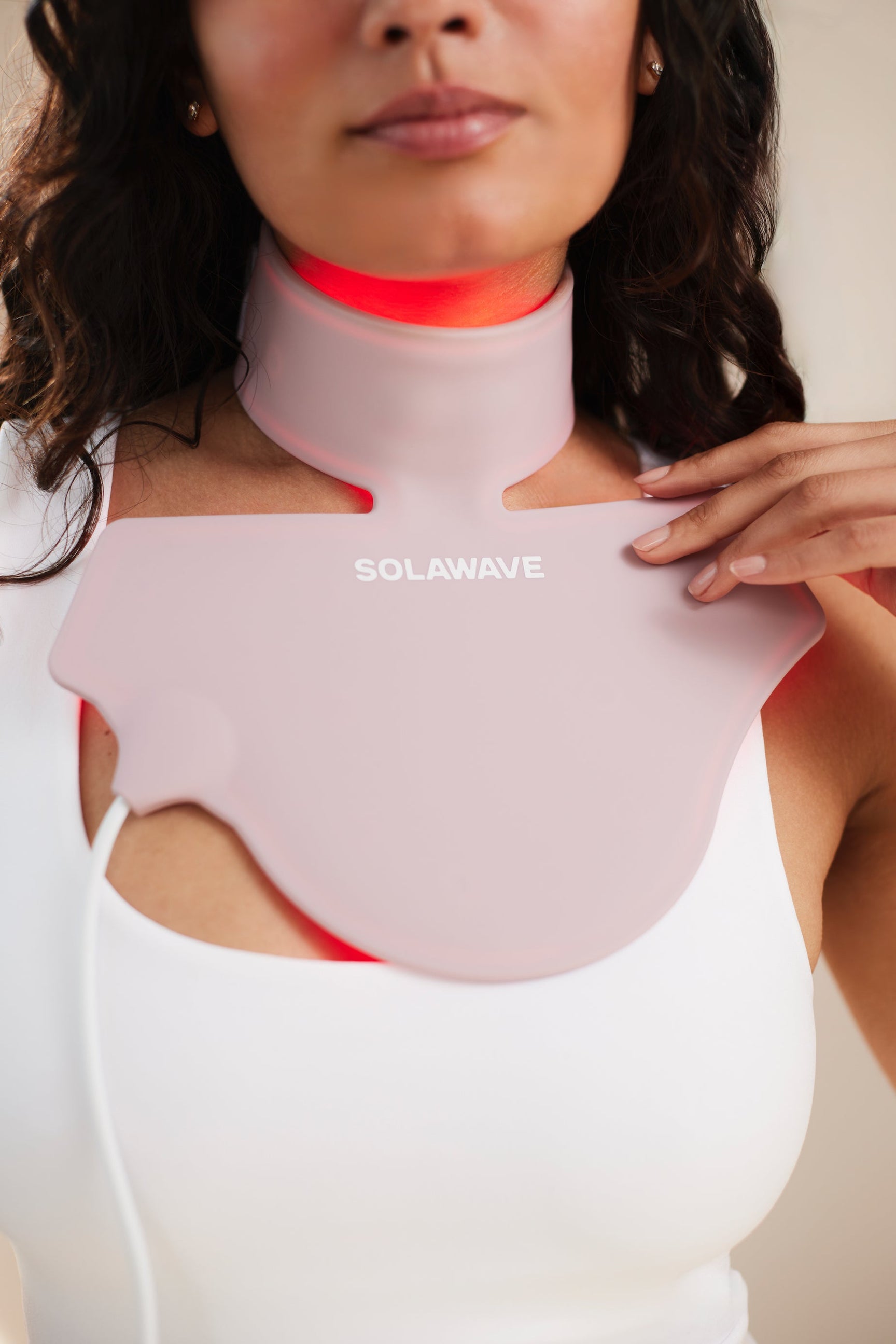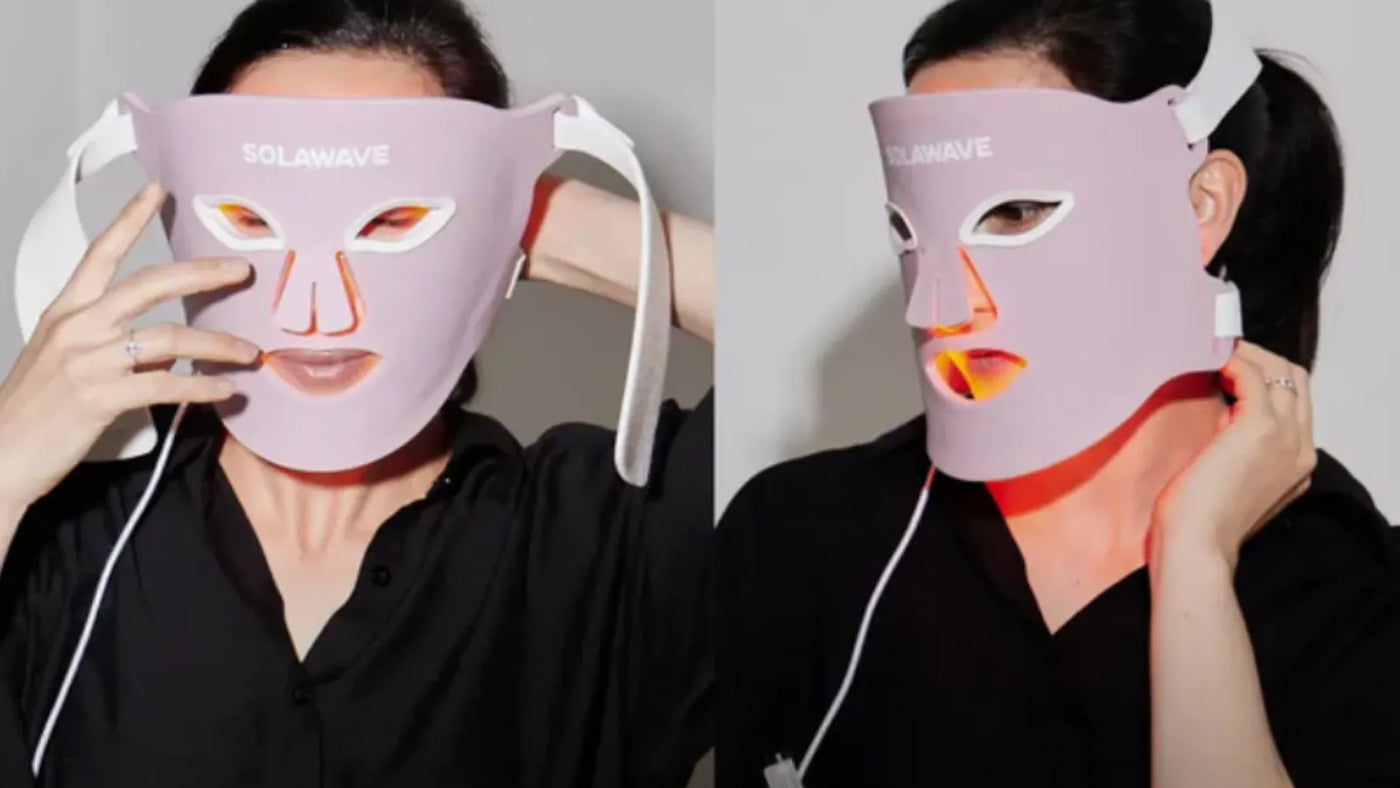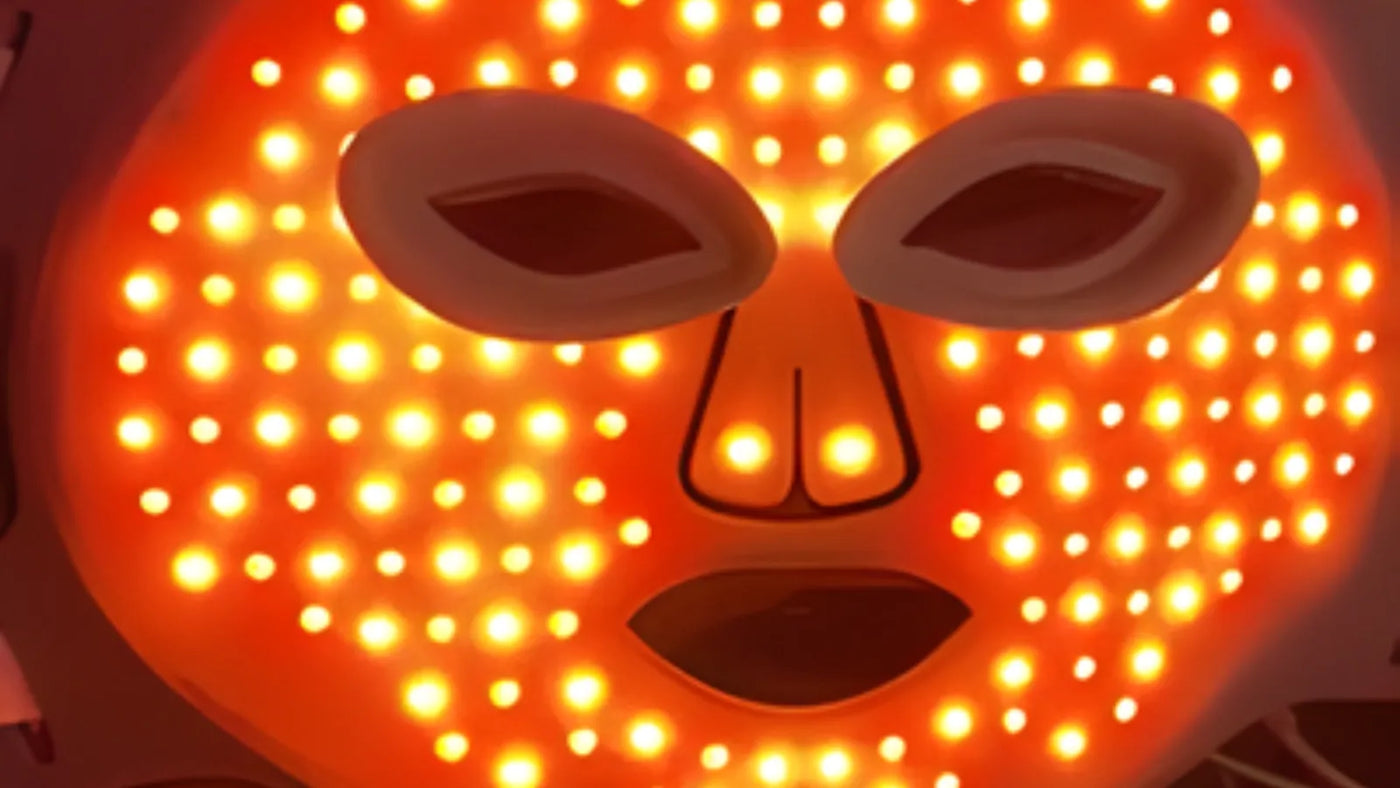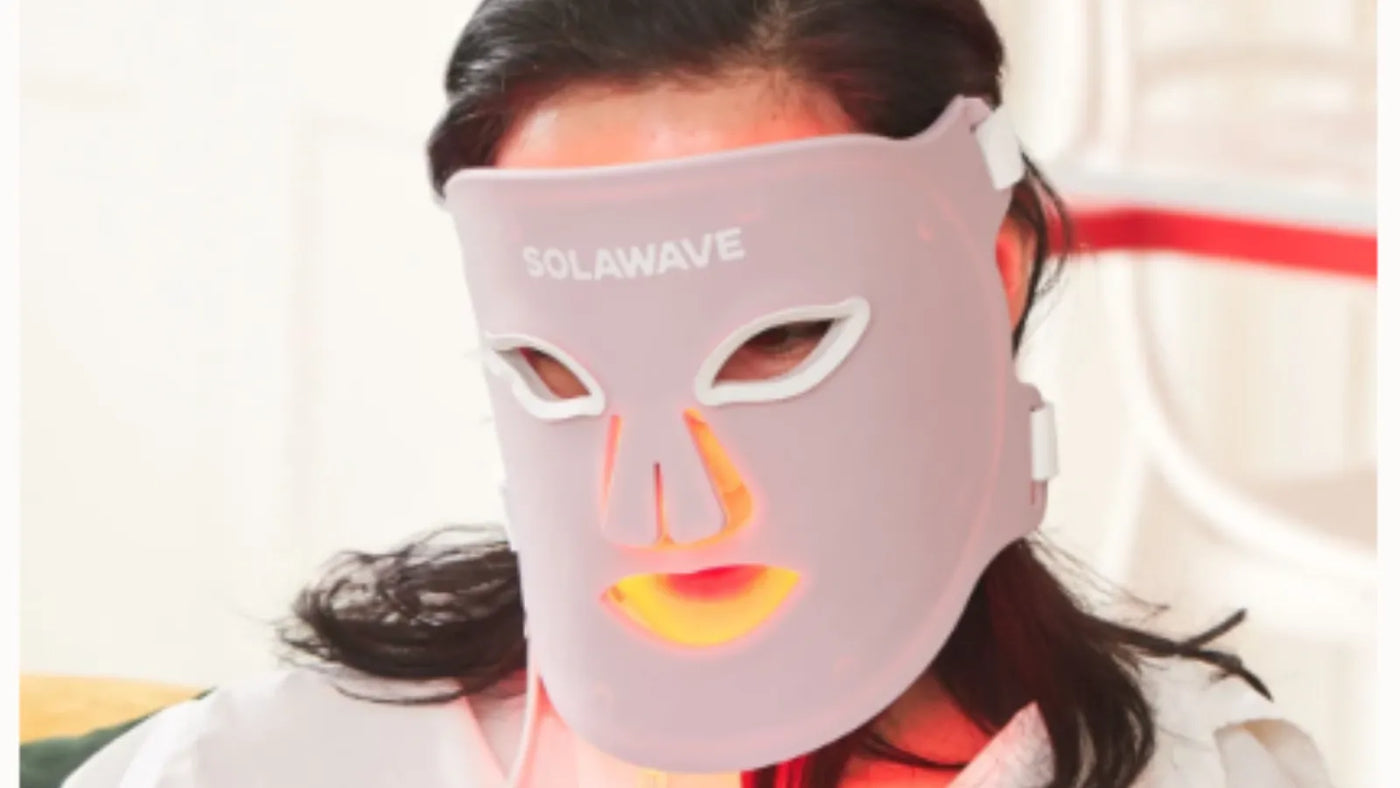

Red Light Therapy for Thyroid Health: Helpful or Not?
Your thyroid gland helps regulate your body’s metabolism, energy levels, and overall well-being. When your thyroid isn’t functioning properly, it can lead to a range of health issues, including hypothyroidism (an underactive thyroid), hyperthyroidism (an overactive thyroid), Hashimoto’s thyroiditis, and Graves’ disease. These conditions can cause symptoms like fatigue, weight changes, mood swings, and more, making effective management essential for your quality of life.
When it comes to treating thyroid disorders, relying on evidence-based medical approaches is vital. Proven treatments such as prescription medications, lifestyle adjustments, and, in some cases, surgical interventions are the foundation of thyroid care.
That said, with the growing popularity of alternative therapies, you might be wondering if options like Red Light Therapy could play a role in supporting thyroid health.
This article will explore what’s currently known about Red Light Therapy and its potential connection to thyroid health. You’ll learn about the science behind this therapy, how it compares to established treatments, and why it’s important to approach new wellness trends with a critical eye. Most importantly, you’ll find clear guidance on what is — and isn’t — supported by research when it comes to caring for your thyroid.
What Is the Thyroid Gland and What Does It Do?
The thyroid gland is a small, butterfly-shaped organ located at the base of your neck, just below your Adam’s apple. Despite its modest size, the thyroid plays a vital role in your overall health by producing hormones that regulate your body’s metabolism. These hormones, primarily thyroxine (T4) and triiodothyronine (T3), influence how your body uses energy, controls temperature, and supports the function of your heart, muscles, and digestive system.
The Role of the Thyroid Gland
Your thyroid acts as a control center for your metabolism. When it releases the right amount of hormones, your body’s systems run smoothly. These hormones affect nearly every organ, helping to regulate your heart rate, body temperature, and how quickly you burn calories. They also play a key role in brain development, especially during infancy and childhood.
Common Symptoms and Causes of Thyroid Dysfunction
When the thyroid doesn’t function properly, it can lead to a range of health issues. The two most common types of thyroid dysfunction are:
-
Hypothyroidism (Underactive Thyroid): This occurs when your thyroid doesn’t produce enough hormones. Symptoms can include fatigue, weight gain, sensitivity to cold, dry skin, hair loss, constipation, and depression. The most common cause is Hashimoto’s disease, an autoimmune condition where the immune system attacks the thyroid.
-
Hyperthyroidism (Overactive Thyroid): This happens when your thyroid produces too much hormone. Symptoms may include weight loss, rapid heartbeat, increased appetite, sweating, anxiety, and difficulty sleeping. Graves’ disease, another autoimmune disorder, is a leading cause of hyperthyroidism.
Other causes of thyroid dysfunction include thyroid nodules, inflammation (thyroiditis), iodine deficiency, selenium deficiency, and certain medications. Both genetic and environmental factors can influence your risk of developing thyroid problems.
Diagnosing thyroid conditions typically begins with a review of your symptoms and a physical examination. Your healthcare provider may check for signs such as swelling in the neck (goiter), changes in heart rate, or skin and hair changes. However, because thyroid symptoms can be subtle or mimic other conditions, lab tests are essential for an accurate diagnosis.
The most common tests include:
-
Thyroid-Stimulating Hormone (TSH) Test: Measures the level of TSH in your blood. High TSH usually indicates hypothyroidism, while low TSH suggests hyperthyroidism.
-
T4 and T3 Tests: Assess the levels of thyroid hormones in your blood.
-
Antibody Tests: Help identify autoimmune thyroid diseases like Hashimoto’s or Graves’ disease.
-
Imaging Tests: Ultrasound or radioactive iodine scans may be used to examine the structure and function of the thyroid gland.
If you notice symptoms that could be related to your thyroid, it’s important to consult your healthcare provider for evaluation and guidance.
Proven Treatments for Thyroid Conditions
When it comes to managing thyroid conditions, the right approach depends on the specific type of thyroid disorder you have, its severity, and your individual health needs. Here’s an in-depth look at the most common and effective treatments for thyroid conditions.
Medications
Hypothyroidism (Underactive Thyroid): The standard treatment for hypothyroidism is daily use of levothyroxine, a synthetic form of the thyroid hormone thyroxine (T4). This medication helps restore normal hormone levels, relieving symptoms like fatigue, weight gain, and sensitivity to cold. Your healthcare provider will regularly monitor your thyroid hormone levels and adjust your dosage as needed to ensure your body gets the right amount.
Hyperthyroidism (Overactive Thyroid): For hyperthyroidism, antithyroid medications such as methimazole or propylthiouracil are commonly prescribed. These drugs work by reducing the amount of thyroid hormone your gland produces. In some cases, beta-blockers may also be used to manage symptoms like rapid heartbeat, anxiety, and tremors, though they do not treat the underlying thyroid problem.
Lifestyle Modifications
While medications are often necessary, lifestyle changes can also play a supportive role in thyroid health:
Supplements: Certain supplements may play a supportive role in thyroid health. Managing iodine intake is important, as both deficiencies and excesses can affect thyroid function. Vitamin D is also vital, particularly for individuals with autoimmune thyroid conditions, since adequate levels support immune health and may improve thyroid-related outcomes. Research indicates that people with thyroid disorders often have lower vitamin D levels, so testing and supplementation — under the guidance of your healthcare provider — may be beneficial. Probiotics are another supplement gaining attention for their potential to support gut health, which is closely linked to thyroid function through the gut-thyroid axis. While probiotics may help maintain a healthy gut environment and indirectly support thyroid health, they should only be used as a complementary approach and never as a replacement for conventional medical treatments. Always consult your healthcare provider before starting any new supplement.
Exercise: Regular physical activity can help manage symptoms such as fatigue, weight changes, and mood swings. Exercise also supports heart health, which is especially important if your thyroid condition affects your cardiovascular system.
Stress Management: Chronic stress can impact your thyroid and overall hormone balance. Techniques like mindfulness, yoga, deep breathing, and adequate sleep can help you manage stress and support your recovery.
Surgical and Radioactive Iodine Treatments
For some thyroid conditions, especially when medications are not effective or when there are structural issues like large goiters or suspicious nodules, more intensive treatments may be necessary:
-
Radioactive Iodine Therapy: This treatment is often used for hyperthyroidism and certain types of thyroid cancer. You take a dose of radioactive iodine by mouth, which is absorbed by your thyroid gland and gradually destroys overactive thyroid cells. This can lead to hypothyroidism, which is then managed with hormone replacement therapy.
-
Surgery (Thyroidectomy): Surgical removal of all or part of the thyroid gland may be recommended for thyroid cancer, large goiters, or when other treatments are not effective. After surgery, you may need to take thyroid hormone replacement for life to maintain normal hormone levels.
The Importance of Working with a Healthcare Provider
Thyroid conditions are complex and can affect many aspects of your health. That’s why it’s crucial to work closely with a healthcare provider who can accurately diagnose your condition, recommend the most effective treatments, and monitor your progress. Regular check-ups and lab tests help ensure your treatment plan is working and allow for adjustments as your needs change.
Self-treating or relying on unproven therapies can delay proper care and lead to serious health complications. Always consult your healthcare provider before making changes to your treatment plan or trying new therapies.
Red Light Therapy and Thyroid Health: What Does the Science Say?
Red Light Therapy has attracted attention as a potential tool for a variety of wellness concerns. However, when it comes to the thyroid gland, the scientific evidence supporting the use of Red Light Therapy is limited and inconclusive.
There is currently no large-scale, high-quality research that demonstrates Red Light Therapy as an effective or safe treatment for any thyroid disorder. The majority of evidence remains anecdotal, and the medical community does not recognize Red Light Therapy as a standard or recommended approach for managing thyroid health.
Limitations of Red Light Therapy
It’s important to understand that the benefits of a Red Light Therapy session depend heavily on the device used and its intended purpose. Devices designed for skincare, for example, emit specific wavelengths and intensities of light that are meant to address surface-level concerns like acne or signs of aging. These devices are not capable of delivering the type or amount of light that would be needed to affect deeper tissues or organs such as the thyroid gland.
Similarly, devices marketed for muscle recovery or joint pain may use different settings and are not interchangeable with those intended for other uses. Using a Red Light Therapy device outside of its intended purpose is unlikely to provide any benefit and could even pose risks.
Red Light Therapy Is Not a Proven Treatment for Thyroid Conditions
Despite growing interest, it’s essential to emphasize that Red Light Therapy is not a proven or approved treatment for thyroid disorders. Relying on Red Light Therapy in place of evidence-based medical care can delay proper diagnosis and effective treatment, potentially leading to serious health consequences.
If you are considering Red Light Therapy for any health concern, consult with your healthcare provider first. They can help you understand the current evidence, discuss safe options, and ensure that your condition is managed with proven, effective treatments.
What Can Red Light Therapy Do?
Red Light Therapy has become a popular option for those seeking non-invasive ways to improve their skin’s appearance and overall skin health. But what exactly can Red Light Therapy do, and what does the science say about its benefits?
Red Light Therapy, also known as photobiomodulation, uses specific wavelengths of red and near-infrared light to interact with your skin at a cellular level. When these wavelengths penetrate the skin, your cells convert the light into usable energy, supporting natural processes like renewal, repair, and restoration. This technology was first explored by NASA for wound healing and has since been studied extensively for its effects on skin and tissue health.
The most well-established benefits of Red Light Therapy are related to skincare. Clinical studies and independent testing have shown that consistent use of Red Light Therapy can:
-
Support healthy collagen and elastin, which helps firm and smooth the skin.
-
Reduce the appearance of fine lines and wrinkles.
-
Improve the look of skin texture and brightness.
-
Diminish the look of redness and post-acne hyperpigmentation.
-
Support overall visible skin rejuvenation, resulting in a healthier, more radiant complexion.
These effects are achieved without invasive procedures, pain, or downtime. Many users see visible improvements within a few weeks, with more significant results after several months of regular use.
Other Uses of Red Light Therapy
Beyond skincare, Red Light Therapy is also used in other areas, though the evidence varies:
-
Muscle Recovery: Some athletes use Red Light Therapy to support muscle recovery and reduce soreness after exercise.
-
Joint Discomfort: There is ongoing research into its potential to help with joint pain and inflammation.
-
Wound Healing: Early studies suggest Red Light Therapy may support the healing of minor wounds and reduce inflammation.
Conclusion
In summary, there is currently no strong scientific evidence supporting Red Light Therapy as a solution for thyroid health or thyroid-related conditions. While Red Light Therapy offers proven benefits for skincare and may support other wellness goals, it should not be considered a treatment for thyroid disorders. Your best path to managing thyroid health is through evidence-based therapies and regular medical guidance. Always prioritize proven treatments and consult your healthcare provider before exploring new wellness options for your thyroid or overall health.
Disclaimer: This article is intended for informational purposes only and should not be interpreted as medical advice or guidance. Always seek medical advice and care from a trusted healthcare professional.
Sources:





















